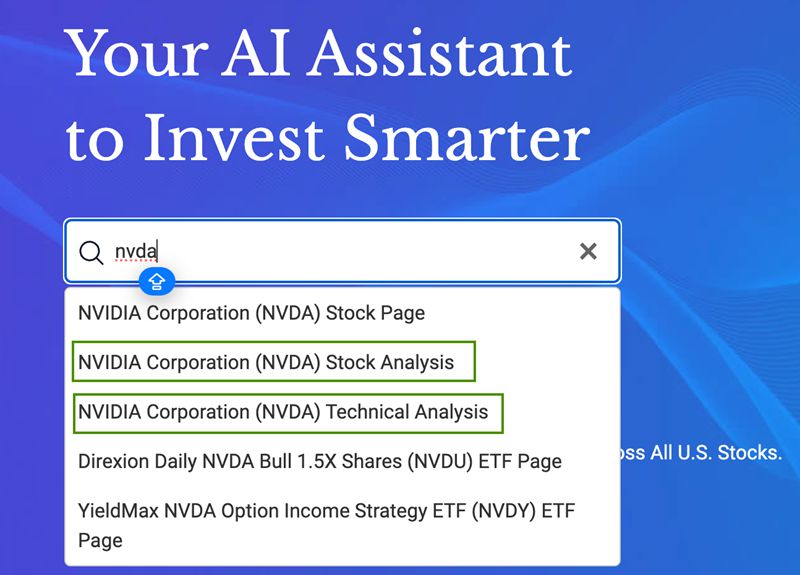20 Recommended Suggestions For Deciding On Ai Invest Sites
20 Recommended Suggestions For Deciding On Ai Invest Sites
Blog Article
Top 10 Tips To Assess The Privacy And Security Of Ai Stock Trading Platforms
As they handle sensitive and personal financial data, security and security are paramount when utilizing AI trading platforms that forecast or analyze the prices of stocks. Data breaches or mishandling could cause reputational and financial loss. These are the top 10 tips for assessing the security and security of these platforms:
1. Examine the encryption of data
Security during transport: Make sure that your platform is using encryption protocols that are secure, like SSL/TLS to secure any data sent between your device's servers and theirs.
Verify encryption at rest. Examine if sensitive data is encrypted on the server platform, using secure standards of encryption (e.g. AES-128).
End-to-end encryption: Determine whether the platform provides end-to-end encryption of sensitive communications or sensitive data.
2. Examine the Authentication Mechanisms
Two-factor authentication (copyright). Make sure the platform you are using allows copyright. This adds another layer of security.
Biometric authentication: Verify if your platform provides biometric login for mobile apps (e.g. fingerprint or facial recognition).
Password policy - Make sure that the platform enforces strong policies for passwords (e.g. length requirements, complexity requirements).
3. Verify compliance with the regulations.
Financial regulations: Ensure your platform is in compliance with the relevant laws governing financial transactions (e.g. SEC FINRA MiFID II).
Data protection law: If you conduct business with the region legally governed by these laws, ensure the compliance.
Audit certifications - Check to see if the system is certified or has had third-party security audits (e.g. SOC 2, ISO 27001).
4. Review Controls for Access to Data
Role-based access: Ensure that the platform supports role-based control (RBAC) that restricts access to data only for authorized users.
Permission levels: Check if you can set granular permissions for different team members or users.
Activity monitoring Check to determine if your platform tracks and monitors the user's activity.
5. Evaluate the vulnerability management
Regular updates: The platform needs to periodically update its software to patch any vulnerabilities.
Testing for penetration: Check whether the platform is subject to regular penetration testing to identify and fix security weaknesses.
Programs for bug bounty: See whether the platform offers a bug bounty program that encourages external security researchers to report vulnerabilities.
6. Evaluate Data Privacy Policies
Transparency The privacy policies of the platform to find out how your data will be used, collected and shared.
Data minimization: Ensure the platform only collects data necessary for its function.
Third-party data sharing: Check that the platform is able to share your information with a third-party and If so then, in what way.
7. Secure API usage is important to check
API security: Ensure the API of the platform API has authenticated methods that are secure (e.g., OAuth, API keys) and also encrypts data exchanges.
Rate-limiting: Check if the API has a limit on rate to prevent abuse and brute-force attacks.
Access logs: See if the platform logs API access and usage for monitoring and auditing.
8. Review the Recovery and Response to Incidents
Incident Response Plan: Ensure your platform is well-defined incident response strategy for handling data breaches.
Check the platform's notification policies to determine if it informs its users promptly if there is an attack on security.
Backups of data: Make sure the platform regularly backups the data it stores and has a disaster recovery plan in place.
9. Check out the security measures for physical security
Security of the data center - Make sure that the server for the platform is hosted in secure data centers that have physical security (e.g. surveillance and access control).
Redundancy: Determine if the platform has redundant systems in order to guarantee that data is available in the event of hardware failure.
Geographic distribution: Verify that data is distributed in multiple geographical locations to increase the resilience.
10. Test User Privacy Controls
Data deletion: Ensure that the platform permits you to erase your personal data for good if you stop making use of the platform.
Privacy settings: Ensure that you have privacy settings on your platform to allow you to control which data is available or shared.
Make sure that data is anonymized for machine learning and analytics.
Bonus Tips
Review and feedback of users to determine the security of the platform and privacy.
Trial period: You are able to use a demo or free trial to try the platform's privacy and security controls.
Customer support: Verify that the platform offers a robust customer service for any security-related issues or concerns.
You can test the security, privacy, and accuracy of AI trading platforms for stocks by following these tips. This ensures that your financial information as well as personal information are secure. A secure platform not just safeguards your assets but creates confidence and trust in its services. Have a look at the top ai stocks to invest in blog for blog recommendations including incite, stock ai, ai stocks to invest in, ai trading software, ai trading tools, free ai tool for stock market india, trader ai review, trader ai, trade ai, stock analysis tool and more.
Top 10 Tips On Assessing The Scalability Of Ai Stock Predicting/Analyzing Trading Platforms
In order to ensure that AI-driven trading platforms and prediction systems can cope with the ever-growing volume of user input, data, and market complexity, it is essential to evaluate their scalability. Here are top 10 tips on how to evaluate scalability.
1. Evaluate Data Handling Capacity
Tip: Verify that the platform is able to process and analyse large data sets.
Why: Scalable platforms must handle growing data volumes without performance degradation.
2. Test Real-Time Processing Capabilities
Check out the platform to determine how it handles streams of data in real time for example, breaking news or live price updates.
Reason trading decisions are taken in real-time and delays can lead traders to miss out on opportunities.
3. Examine Cloud Infrastructure for Elasticity
Tip. Determine whether the platform utilizes cloud-based infrastructure, such as AWS, Google Cloud and Azure which are able to expand resources according to demand.
Why cloud platforms are so popular: They provide flexibility, allowing the system to scale up or down depending on the demand.
4. Evaluate Algorithm Efficiency
Tips: Evaluate the computational power (e.g. deep-learning and reinforcement learning) of the AI models that are used to predict.
Why: Complex algorithmic structures can be resource-intensive. Making them more efficient is essential to scale them.
5. Explore Parallel Processing and distributed computing
Check to see if your system is running the concept of distributed computing or parallel processing (e.g. Apache Spark, Hadoop).
The reason: These technologies enable quicker data processing and analytics across many nodes.
6. Examine API Integration and Interoperability
Tips: Test the platform's ability to integrate with external APIs (e.g. market data providers, brokerage APIs).
Why? Seamless integration allows the platform to be adapted to changing trading environments as well as data sources.
7. Analyze User Load Handling
Try simulating high traffic volumes to see the performance of your platform.
Why: The performance of a platform that is scalable should not be affected by the growth in users.
8. Examine the Model Retraining Adaptability
TIP: Assess how frequently and efficiently AI models are trained with the help of new data.
Why: Markets evolve, and models need to be able to adapt rapidly to maintain precision.
9. Check for Fault-Tolerance and Redundancy
TIP: Ensure the platform is equipped with failover mechanisms to handle software or hardware failures.
The reason: Downtime is expensive for trading. So fault tolerance is essential to scalability.
10. Monitor Cost Efficiency
TIP: Take into consideration the cost of scaling your platform. Consider cloud resources, such as data storage and computing power.
Why: The price of scalability shouldn't be unsustainable. Thus, it's essential to balance performance and cost.
Bonus Tip Future-Proofing
Check that the platform can be able to adapt to changes in regulation and incorporates the latest technologies, like quantum computing, or even advanced NLP.
These factors can assist you in assessing the potential of AI-powered stock prediction systems and trade platforms. They will also ensure that they are robust and efficient, ready for expansion, and future-proof. Take a look at the best my review here about ai trading tools for more examples including best ai for trading, ai trading app, ai for investing, trader ai app, ai for stock trading, ai trading tools, ai trader, best ai trading software, trader ai intal, invest ai and more.